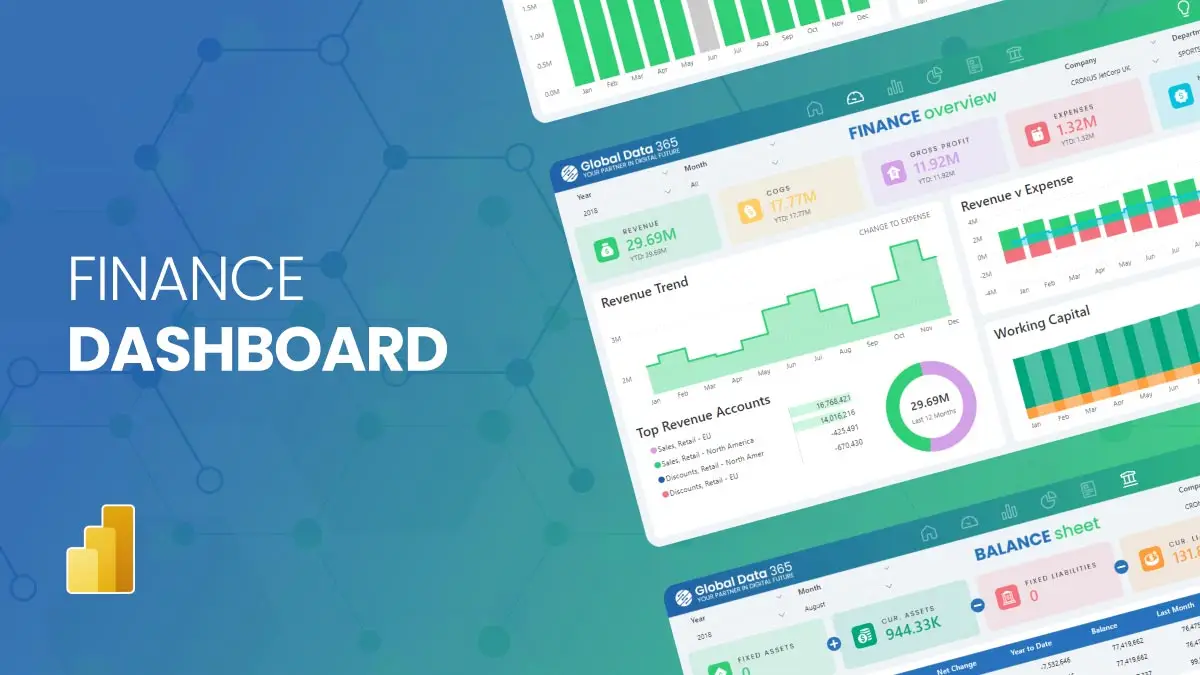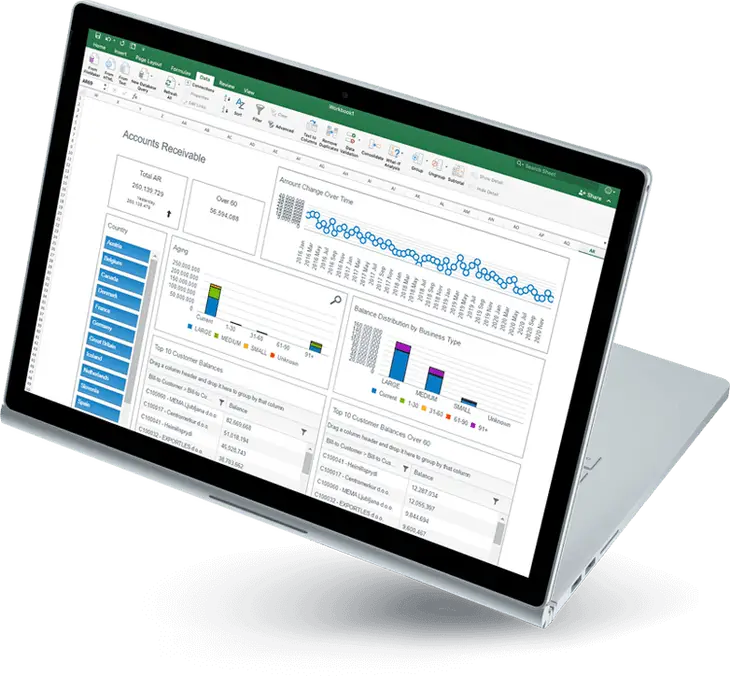
Financial Reporting vs Management Reporting

- Global Data 365
Reporting is essential to the growth of any business. The reports provide information and insight for the business leader when making strategic choices that impact not only all the departments but also the company, particularly when it comes to financial and management reporting and analysis. An organization benefits from reporting, as it helps them to evaluate progress regarding their business objectives in an enterprise, and to make strategic decisions to lead the business towards future success.
Many company owners are familiar with the standard financial reports they can expect monthly, but many are not familiar with the types of management reports available that could help boost efficiency and profitability for their companies. There are different kinds of management reports available.
While there are different kinds of strategies in both financial and management reporting, organizations often search for someone who can work in both. That is why it is crucial to know the differences between financial reporting vs. management reporting.
What is Financial Reporting?
Financial Reporting is directed towards compliance and is used for external purposes. Financial reporting is the method of shaping business strategies by supplying company stakeholders with financial reports. Financial Reporting can also be created to inform internal decisions. However, documents normally appear somewhat different from the data and contain different details. After that, the financial reports are sent to third parties. Financial Reports includes the usual weekly, monthly and annual reports that businesses get each month, including:
– Profit and Loss Statement
– Balance Sheet
– Accounts Payable
– Accounts Receivable
– Cash Flows Statement
Depending on the time span, these reports will cover multiple time periods. The intent of the report, as well as the third parties requests. For instance, annual financial reports to shareholders will include a three-month time. These reports are crucial for any organization. These reports are used by banks, investors, and regulators to accept loans, lines of credit, and other decisions. In many situations, financial reports are needed to ensure adherence to certain laws or regulations.
At a given point, these reports represent your company’s financial position. They explain the general impression of the success of your company but fail to provide deeper insight into the details of your business operations. They look backwards and don’t even inform you about the performance of the business in the next month or next year. Modern systems for financial restructuring may be altering this dynamic is due to the accumulation of data in real-time, as well as automated processes of reporting now allow the creation of financial reports that contains details of the current financial reports for your organization.
What is Management Reporting?
With management reporting, companies can have a deeper insight into the financial health of their organization. Management reports provide more insight than financial reporting into the company’s financial situation, performance, and overview of all departments. Management reporting and analysis provide greater insights, which include the ability to segment and analyse information in a broad range of ways. Some of the ways include:
- Profit and Loss by Divisions
- Realization Rate
- Utilization Rate
Management Reporting is focused on parts of the business instead of an overall view of the organization. By segmentation, you can get into the specifics and examine the drivers of the business. For instance, an example would be the evaluation of how the Marketing Department operates over a given amount of time, or how much benefit a sales employee has had over a certain month. Though, you might want to make sure that you are receiving the correct reports that your organization requires to drive strategic decision-making.
Key Comparison: Financial Reporting vs Management Reporting
To enhance the performance and profitability of your business, different types of reporting techniques are available. Even though both contain different techniques, companies require someone who can handle both.
Compared to financial reporting, management accounting is not compulsory and is used for internal purposes mainly. Rather than relying on general accounting data used to reflect a company’s financial situation, management reporting uses main performance indicators, including metrics to evaluate a business’ return on investment (ROI).
Depending on what kind of financial reporting you use to inform your business plan, management reports are always a key commodity and are almost inevitably going to surpass financial reports when it comes to receiving greater insights. Whereas financial reports are simpler, management reports are more open-ended. The financial reports are critical for avoiding cash flow challenges and making more figures. To make informed strategic decisions, you will need management reports side by side. It is necessary to ensure the right processes and systems for the execution of apt financial and management reports.
Importance of Financial and Management Reporting
Some businesses only require financial reports every month for various reasons. Because management reports cost them extra money, they tend not to use them. If your business fails to implement management reporting, you could be losing out on details that will help your business expand or keep you from introducing expensive services that do not offer an ROI. Any business requires financial reporting for compliance, to ensure that the figures add up, and to minimize cash flow. To make informed strategic decisions backed by reliable results, your company will also require management reporting.
The insights gathered from management reporting and analysis are essential to make informed decisions that might be beneficial and profitable for your business. Management reporting also focuses on future data points that help plan for long-term future projects. Any organization will be interested in getting more insight into the whole company’s activities, which tends to improve success, profit, and productivity.
Best Practices of Doing Financial and Management Reporting
There is a dire need for creating great reports that provide data to the primary stakeholders. Reports are meant to be easily readable and comprehendible by others, so it does not harm in putting more time into ensuring all these reports make a lasting impression on the target audience.
Listed below are some of the best practices of creating impactful financial reporting vs management reporting:
– Eye Appealing Reports: Important stakeholders are always busy. Dry, lengthy reports could end up losing their attention or confusing them when they need to search for the data they require. A well-constructed report will make it easier for the leaders to skim through the required information.
– Automated Processes: It is essential to use automation to create reports, as it can save time. The less time is taken to produce a report, the quicker it can reach the business leaders. With the real-time aggregation of data pulled from the entire organization, you will have a report that will contain the latest data.
– Implement Graphics and other Visuals: For a report to catch the reader’s attention, it should include graphics and other visual elements that make it easier to read the report.
– Point-and-Click Design: You can either recruit a graphic designer to create the visuals on the report or use a point-and-click design to navigate easily through the report and deliver it at the right time.
– Multiple Reports: By automating processes, you can make multiple reports that address the operations of the entire department separately. This gives the business leaders an overview of all operations.
In Conclusion
A company’s performance and financial stability rely on both financial reporting vs management reporting. Yet, there are a wide variety of possible results when it comes to producing reports that fulfil their goals and deliver the required data on time to the main stakeholders.
So, whether you are generating reports for external or internal use, the reports must be created in an easy-to-read format that holds the reader’s attention. Here at Global Data 365, we go beyond basic accounting data and offer BI solutions to companies. We help businesses improve performance and profitability by providing insight into the data gathered in real-time through our reporting and analytics solutions.
Contact us now and speak to our BI experts.
Get 30 days free license for Jet Reports.
Search Blog
Related Resources


Finance Dashboard Power BI



